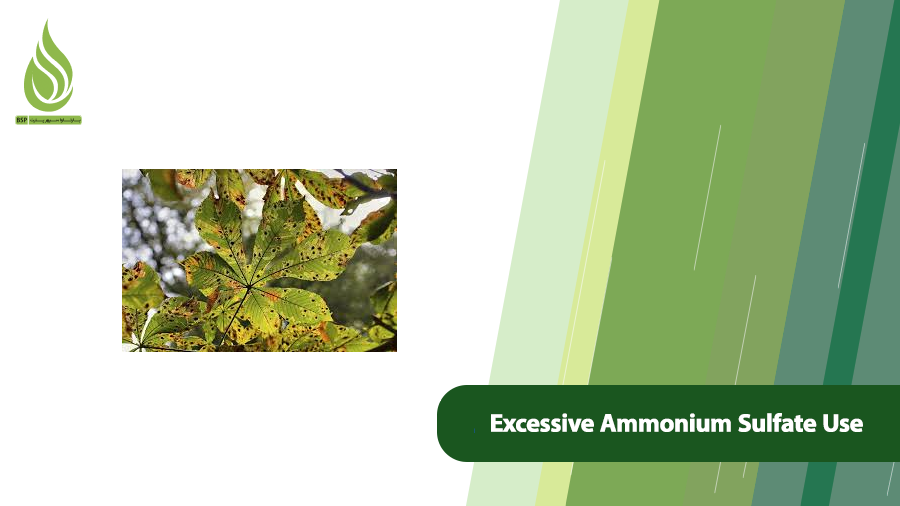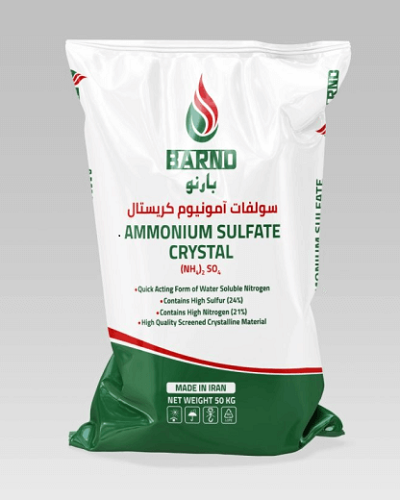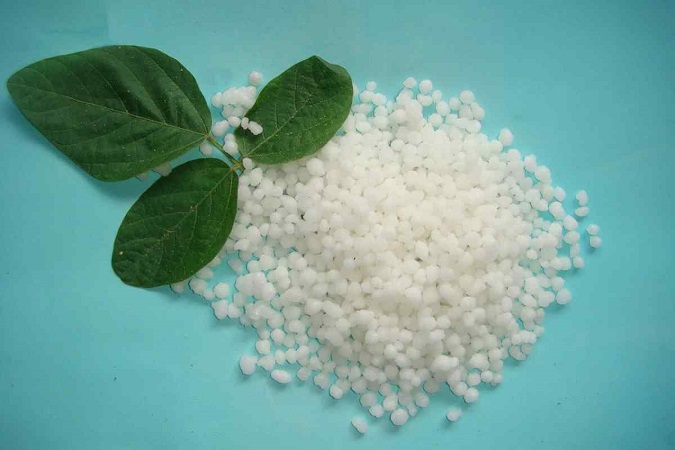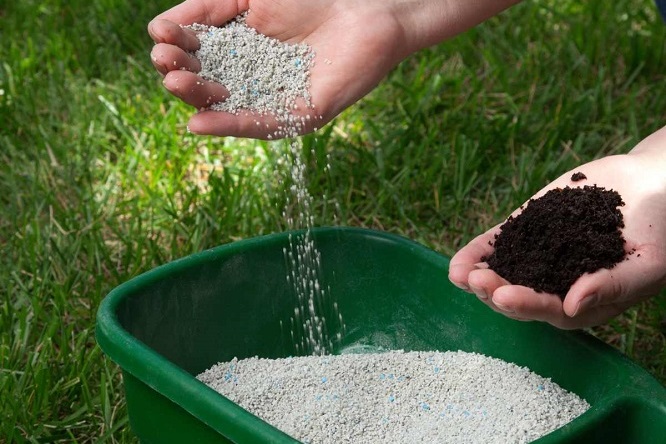
The Harmful Effects of Excessive Ammonium Sulfate Use
Ammonium sulfate is a popular nitrogen-based fertilizer widely used in agriculture. It helps plants grow more effectively and boosts crop yields. Despite its benefits, excessive use of ammonium sulfate can lead to significant drawbacks. To understand the risks of excessive application and the potential damage caused by this fertilizer, read on.
What Is Ammonium Sulfate, and Why Is It Used in Agriculture?
Ammonium sulfate is a well-known mineral salt with applications across various industries. Primarily, it serves as a source of nitrogen and sulfur in agriculture and industrial processes. It is used in sectors such as food production, chemical manufacturing, water treatment, pharmaceuticals, and more. However, its most prominent use is as an agricultural fertilizer.
Key Benefits of Ammonium Sulfate in Agriculture
- Ammonium-form nitrogen supply: This fertilizer provides nitrogen in the ammonium form, which plants absorb rapidly, promoting faster growth.
- Acidic properties: Its acidic nature makes it particularly useful for alkaline or saline soils, helping to balance soil pH.
- Cost-effectiveness: Its affordability makes it an economical choice for farmers.
- Lower solubility: Compared to urea, ammonium sulfate dissolves more slowly in water, reducing nutrient leaching and helping retain essential minerals in the soil.
- Versatility in availability: It is sold in crystalline, granular, and powdered forms, allowing flexibility for different farming conditions.
- Dual nitrogen and sulfur supply: Both elements are critical for healthy plant development.
- Enhanced plant resilience: It strengthens plants’ resistance to environmental stressors.
- Improved crop yield and quality: It not only increases agricultural output but also enhances product quality.
- Better nutrient absorption: By lowering soil pH, it improves nutrient uptake, stimulating plant growth.
Overall, ammonium sulfate is an efficient and cost-effective fertilizer that supports plant growth and crop productivity, making it a top choice for farmers. However, excessive use can have damaging effects on soil, the environment, and even the plants themselves. Below, we explore these drawbacks in detail.

The Harmful Effects of Excessive Ammonium Sulfate Use
Overusing ammonium sulfate fertilizer can lead to several adverse effects, outlined below:
- Plant Toxicity: Excessive application can harm plants, causing root burn or stunted growth.
- Nutrient Buildup: Overuse leads to nitrogen and sulfur accumulation in the soil, disrupting its nutrient balance.
- Soil Acidification: High doses drastically lower soil pH, making it overly acidic and unsuitable for many crops.
- Nitrogen Leaching: Heavy rainfall or over-irrigation can wash away nitrogen and other nutrients, reducing the fertilizer’s effectiveness and contaminating groundwater.
- Reduced Crop Quality: Over-application may degrade the flavor, texture, and appearance of agricultural products.
- Water Pollution: Leached nitrogen and sulfur can pollute water sources, damaging aquatic ecosystems and biodiversity.
In summary, excessive ammonium sulfate use poses serious risks to soil health, plant vitality, and environmental sustainability. To mitigate these impacts, adhering to recommended application rates and adopting responsible fertilizer management practices is essential.

Ammonium Toxicity from Excessive Ammonium Sulfate Use
One of the persistent challenges in using nitrogen fertilizers (particularly ammonium-based forms) is the risk of ammonium toxicity. This issue demands careful attention. When plants absorb ammonium, the root pH decreases. To balance internal pH, the plant releases hydrogen ions (H⁺). As a result, ammonium-based nitrogen can benefit growers who need to lower soil pH.
However, excessive ammonium sulfate application can lead to plants absorbing more nitrogen than they need. The surplus nitrogen is stored and utilized when fertilizer use is reduced. Notably, plants can safely store nitrogen in nitrate form, but excess ammonium accumulation damages plant cells.
Ammonium toxicity occurs when absorbed ammonium exceeds safe cellular levels. Fortunately, in warm climates, nitrifying bacteria naturally convert ammonium to nitrate, minimizing toxicity risks—unless excessive ammonium fertilizer is applied.
Specific conditions, such as low temperatures (below 15°C), waterlogged oxygen-deficient soils, and low soil pH, can inhibit nitrifying bacteria activity, triggering ammonium toxicity. This risk is higher during cold, wet seasons (winter and early spring).
Symptoms of Toxicity
Initial signs include interveinal chlorosis (yellowing) in young leaves, which may progress to brown necrotic spots. In mature plants, mid-sized and larger leaves are affected. Leaf edges may curl upward or downward depending on the species. Root growth is also stunted.
Preventing and Managing Ammonium Toxicity
High temperatures significantly reduce ammonium toxicity risks. Therefore, ammonium sulfate and similar fertilizers should be applied during warm seasons. The best time for ammonium sulfate application is during the growing season (spring and summer), avoiding winter or cold periods. Additional strategies include:
- Avoid overapplication to prevent ammonium buildup.
- Combine ammonium sulfate with other nitrogen fertilizers during the growing season.
- Limit excessive irrigation, as waterlogged soils deprive nitrifying bacteria of oxygen.
- Maintain soil pH between 6.2–6.5 to support bacterial activity.
- Conduct soil tests to monitor ammonium levels.
- Avoid ammonium fertilizers in low-temperature or low-light conditions.
Remedial Actions
If preventive measures fail:
- Stop ammonium fertilizer use immediately.
- Flush the soil and switch to nitrate-based fertilizers.
- Continue using nitrate fertilizers until conditions improve.

How to Prevent the Harmful Effects of Ammonium Sulfate?
Ammonium sulfate, particularly Iranian ammonium sulfate, offers significant benefits as one of the most effective fertilizers for enhancing plant growth and productivity. However, excessive or improper use of Ammonium Sulfate can lead to adverse consequences. To avoid the risks of overapplication, it is essential to use this fertilizer optimally. Tailor the amount of ammonium sulfate to the specific needs of your plants and soil type to prevent nutrient overload and buildup.
Regular soil testing is critical for understanding your soil’s nutrient profile and accurately managing plant requirements. Soil tests also help determine the soil’s precise pH level. Maintaining pH within the 6.2–6.5 range ensures healthy microbial activity and optimal nutrient absorption.
Overwatering can contribute to nitrogen leaching and nutrient loss. Implement a precise irrigation schedule and adopt controlled irrigation methods to mitigate this risk. Another key strategy is diversifying fertilizer use. Combining ammonium sulfate with other nitrogen fertilizers (such as nitrate or urea) reduces the hazards associated with overreliance on a single fertilizer type.

Proper Application Rate of Ammonium Sulfate
The appropriate amount of ammonium sulfate depends on several factors, including plant type, soil conditions, and the specific nitrogen and sulfur requirements of the crop. Below are key considerations for determining the correct application rate:
- Soil Testing: Conduct soil tests before applying ammonium sulfate to assess nitrogen levels and soil pH. This data helps tailor fertilization to the plant’s actual needs.
- Plant Nitrogen Requirements: Nitrogen needs vary by plant species. Leafy greens, for example, require more nitrogen than fruit-bearing crops. Research the specific requirements of your plants before fertilizing.
- Timing: Fertilizer needs change during growth stages (germination, flowering, fruiting, etc.). Higher nitrogen demand typically occurs in early growth phases. Generally, ammonium sulfate application rates range from 100 to 300 kg per hectare, adjusted for plant type and soil conditions.
- Nitrogen Form Ratios: In certain conditions, ammonium-based nitrogen fertilizers should make up roughly 50% of the total nitrogen applied. In other scenarios, use urea or non-ammonium nitrogen fertilizers.
- Monitor Plant Response: After application, observe plant growth and health to adjust future doses. Watch for signs of nitrogen deficiency (e.g., yellowing leaves) or toxicity (e.g., leaf burn).
- Weather Considerations: Humid or cold climates increase the risk of ammonium toxicity. Adjust application rates cautiously under these conditions.
Determining the ideal ammonium sulfate rate requires understanding soil properties, crop type, and application timing. By combining precise data with continuous monitoring, growers can maximize the fertilizer’s benefits while avoiding overapplication risks.
